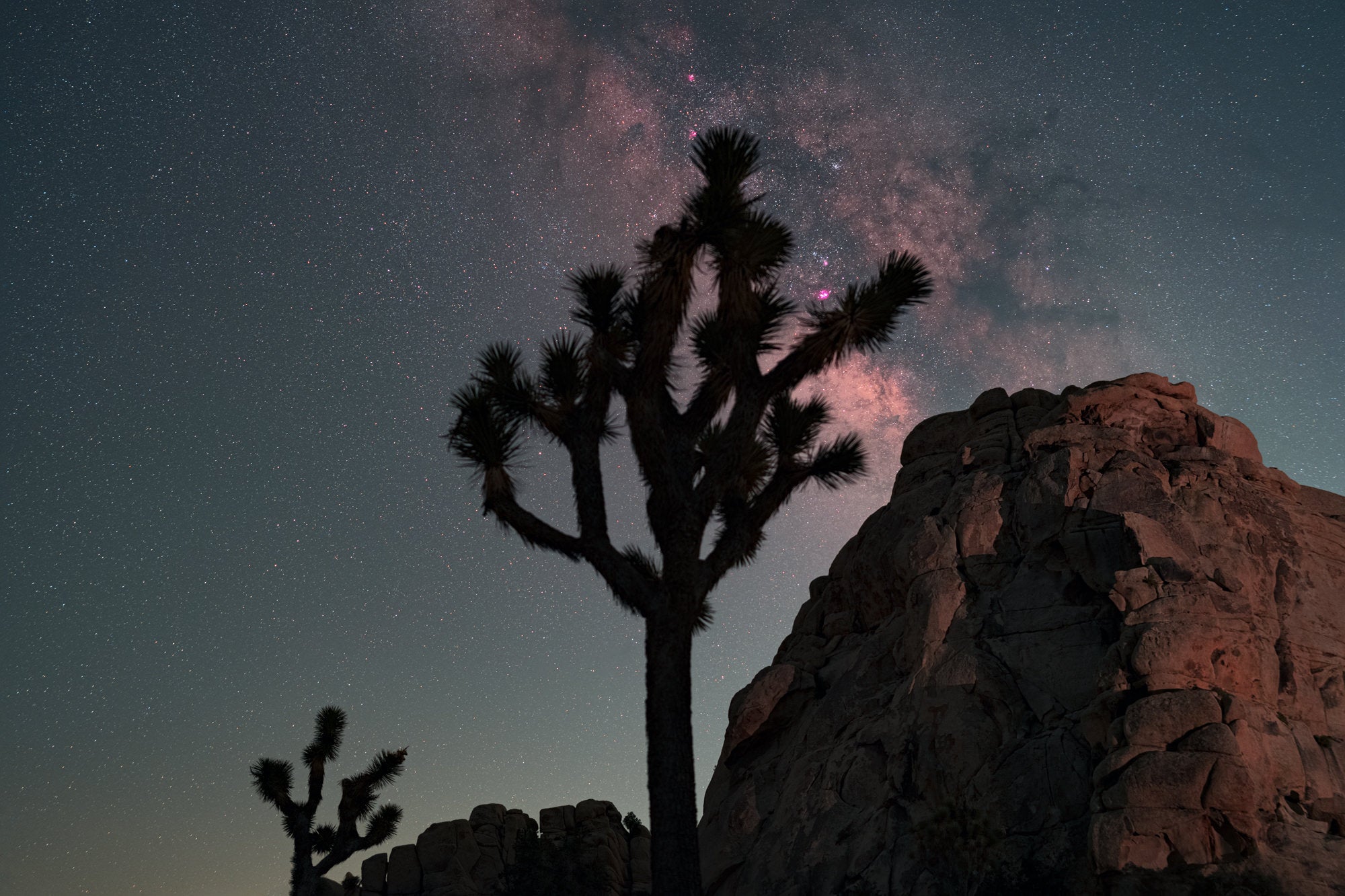The 500 Rule for Astrophotography is a simple formula to calculate the maximum time you can set for your exposure before the stars begin to trail or appear blurry. Astrophotographer and Alpha Collective member Stan Moniz (@stanmoniz) uses this rule and teaches it in his workshops to show how you can capture pinpoint stars. Moniz uses Sony Alpha cameras and Sony lenses, but the rule can be applied to any camera/lens combination. Keep reading below as he explains the 500 Rule and how you can use it on your next outing to capture the night sky.

Photo by Stan Moniz. Sony Alpha 7 IV. Sony 35mm f/1.4 G Master. 8-sec., f/2, ISO 1600
Astrophotographer and Alpha Collective member Stan Moniz explains how you can use this simple rule to calculate your exposure time for astrophotography.
The 500 Rule For Astrophotography
The 500 Rule is a pretty easy technique to remember and one that Moniz likes to use because it doesn’t get too technical. “For a full-frame camera,” Moniz explains, “you basically just take 500 and divide that by your focal length. Your camera only has certain shutter speeds so you want to round this resulting number down to match the closest one. If you use this rule on your camera with a smaller megapixel count, you will get sharp stars. If you go past that rule, you’re going to start seeing trailing.”
500 / Focal Length = Shutter Speed (Round down to nearest zero)
For example, if you are shooting with the Sony Alpha 7S III and Sony 14mm f/1.8 G Master lens, this is how you would calculate your shutter speed:
500 / 14 = 35.71
35.71 is your result, and you would then round that down to 35 seconds to get your final shutter speed.
Time to change lenses? Let’s say you want to shoot with the Sony 16-35mm f/2.8 G Master lens at 35mm.
500 / 35 = 14.28
Round 14.28 down to 14 seconds for your shutter speed.
Adjusting For Higher Megapixel Cameras
The 500 Rule technique was based around 35mm film grain cameras, so if you’re using a higher megapixel camera like the Sony Alpha 1 or Sony Alpha 7R IV, Moniz says the 500 Rule might be too liberal and you’ll have to make some adjustments. “If the megapixels are bigger, the star will take much longer to go from one pixel to the next, keeping them pinpoint instead of trailing,” he explains.

Photo by Stan Moniz. Sony Alpha 7 IV. Sony 35mm f/1.4 G Master. 10-sec., f/2, ISO 2000
He continues, “Say I have the Alpha 7S III with 12 megapixels and the Alpha 1 with 50 megapixels. If I use the 500 Rule on both and then pixel peep the images, the Alpha 7S III will most likely have a pinpoint star, but you will probably find trailing on the Alpha 1. The reason behind that is you have more information on the sensors, so the stars can easily jump across pixels. If you just keep bumping down your shutter speed on your higher megapixel camera, you’ll achieve those pinpoint stars. This is really only something you’ll notice if you’re blowing the image up big. If you’re just using it for social media you probably won’t see that trailing and I would rather use that exposure time to my benefit.”
Adjusting For Crop-Sensor Cameras
Since the rule is for full-frame cameras, you will also have to make some adjustments if you’re shooting with a crop-sensor camera like the Sony Alpha 6400 or Sony Alpha 6600. “If you’re shooting with a crop-sensor camera,” explains Moniz, “you have to first multiply the crop factor by the focal length of the lens. Then you divide that number by 500 to get your exposure time.” These Sony APS-C cameras have a 1.5x crop factor, so you would first multiply your lens focal length by 1.5 before dividing it into 500.
1.5 x Focal Length = X
500 / X = Shutter Speed
If you’re shooting with your APS-C camera at 16mm, here is how you would calculate your shutter speed:
1.5 x 16 = 24
500 / 24 = 20.83
You would then round down 20.83 to 20 seconds for your shutter speed.
See more on the 500 Rule For Astrophotography and upcoming workshops at StanMoniz.com.
See more of Stan Moniz’s work on his Alpha Universe Profile and on Instagram @stanmoniz.



